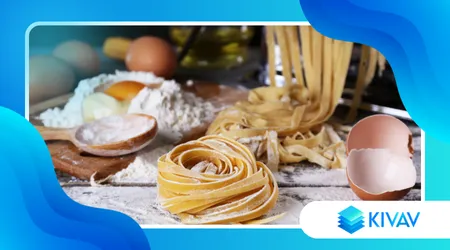How to achieve the perfect creaminess for pasta and risotto: the secret of Italian chefs

Achieving perfect creaminess for pasta and risotto It's the ambition of every food enthusiast. Transforming a simple dish into a creamy and enveloping experience isn't magic.
Announcements
It's pure technique, the cornerstone of Italian gastronomy. This skill distinguishes the skilled amateur chef from the true professional.
The secret, jealously guarded by the Italian chefs, lies in meticulous passages.
The Science Behind Creaminess: Emulsification and Starches
There creaming It's a complex and delicate emulsion process. It represents the definitive union between the starch, fats, and the liquid part of the dish.
It's not just about adding butter and cheese at the end of cooking. The chemistry of the ingredients plays a fundamental role. The starch released by pasta or rice is essential.
Announcements
The Crucial Role of Cooking Water
The cooking water, rich in starch, is the real glue of the creaming.
Storing it carefully is imperative. This thick, milky water helps bind fats. It acts as a natural emulsifier, creating a velvety texture.
The Synergy Between Fat and Heat
Fat (butter, oil, or both) should be added sparingly and at the right time. Too much makes the dish heavy and greasy.
Residual heat is the other key factor. Never stir over high heat; excessive heat can ruin the emulsion.
Creaming Techniques Revealed
A great dish of risotto or pasta requires attention to every detail. Technique is the only way to obtain a perfect creaming for pasta and risotto.
Creaming Risotto: The Creamy Wave
For the risotto, the creaming (or manteca) is performed out of the fireOnce the heat is turned off, add the butter and parmesan.
The butter must be cold, a crucial detail for the thermal shock which facilitates emulsion.
Yes bangs Stir the risotto vigorously. The pan is moved in a decisive circular motion, creating a wave.
Imagine a Saffron risottoTurn off the heat. Add the chilled butter and Parmesan cheese. Stir vigorously for a full minute.
You'll see the consistency change, turning into a glossy cream. The final resting time, known as the "risotto resting time," is a must.
Creaming Pasta: The Secret of the Pan
For pasta, the strategy is slightly different but the goal is the same: obtain a perfect creaming for pasta and risotto.
Learn more: Home Smoking Techniques: Intense Flavors in the Kitchen
Drain the pasta al dente and transfer it to the pan with the sauce. Add plenty of the cooking water. The water emulsifies with the fat from the sauce and the starch from the pasta.

The Importance of Quality and Gesture
The success of this technique depends strictly on the quality of ingredients.
Good butter, preferably clarified, is essential. A cheese like Parmigiano Reggiano DOP should be freshly grated.
Painter to get a perfect creaminess for pasta and risotto
Think of mantecatura as the a painter's final brushstrokeThe artist has prepared the canvas and colors. Now, with an expert and measured gesture, he adds the finishing touches.
Interesting: How to Balance Sweet and Savory Flavors in Traditional Italian Dishes
It's not something you can improvise; it's the result of practice and knowledge. The final gesture must be quick and confident.
The Reversal Tail
Once stirred, the dish is ready to be served. The consistency of the result is proof of mastery.
Risotto, for example, does not have to be compact, but it must to expand on the plate. This effect is called to the wave.
Relevant Data and Statistics
The choice of rice variety is fundamental for obtain a perfect creaming for pasta and risottoRice varieties with a high amylopectin content are best.
Learn more: Pasta and beans, Neapolitan style: the humble dish that conquered Italy
According to an analysis of theNational Rice Board As of 2024, the Italian rice varieties most suitable for creaming are Carnaroli and Arborio.
These two varieties represent more than 70% of the production of high-quality risotto rice in Italy.
| Rice Varieties | Amylopectin content (approx.) | Ideal Use |
| Carnaroli | 24% | Creamy risottos, hold their shape well after cooking |
| Arborio | 20% | Risottos, high starch release |
| Vialone Nano | 18% | Risottos, soups, medium-small grain |
The Carnaroli It's known for its ability to keep the grain firm, releasing starch slowly. This makes it unsurpassed.
Avoid Common Mistakes for Excellent Results
Amateur cooks often make simple but fatal mistakes. Achieving perfect creaminess for pasta and risotto requires discipline.
One of the most common mistakes is adding too much cheese too soon. Excessive heat coagulates the cheese proteins. This causes to spin, making the consistency rubbery.
The preparation of a Cheese and black pepper It's the ultimate test. The cheese (Pecorino Romano DOP) must be combined with the right amount of cooking water and pepper.
The mixture should form a thick, smooth cream. If you get the temperature or water quantity wrong, you'll end up with a lump of solid cheese.
Another mistake is not mixing enough or doing it inconsistently. Stirring is the driving force of emulsion.

The Final Twist: Getting the Perfect Creaminess for Pasta and Risotto
Culinary mastery isn't just execution, but also understanding. Mantecatura is the culmination of meticulous preparation.
Let's ask ourselves, how often is a dish ruined by superficial creaming?
The ability of a chef to obtain a perfect creaming for pasta and risotto talks about his dedication.
Next time you prepare a risotto, remember: the secret is in the final gesture, in the cold butter and in thestarch-rich waterWith these precautions, success is guaranteed.
Frequently Asked Questions
Is cream allowed for stirring?
No, cream is not part of the traditional Italian mantecatura. The creaminess must come from the starch in the rice/pasta and the emulsified fats.
The use of cream is often a filler to hide a poor technique.
Can I Use a Cheese Other Than Parmesan or Pecorino?
For classic dishes (like risotto alla Milanese or cacio e pepe), the answer is no.
The composition, flavour and melting ability of Parmigiano Reggiano and Pecorino Romano are unique and irreplaceable for obtain a perfect creaming for pasta and risotto.
For more modern variations, the choice is personal, but the technique does not change.
Should Butter Always Be Cold?
Yes, the butter must be refrigerator cold.
This favors the thermal shock necessary to initiate and stabilize the perfect emulsion of fat, water and starch, essential for a shiny and creamy result.
++ Perfect risotto in 5 steps with chef's tips.
